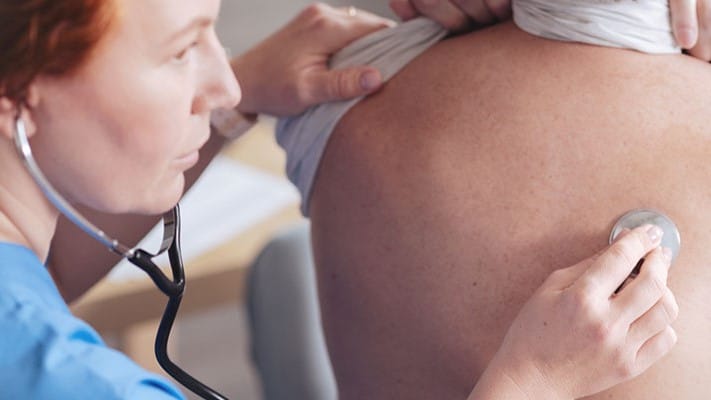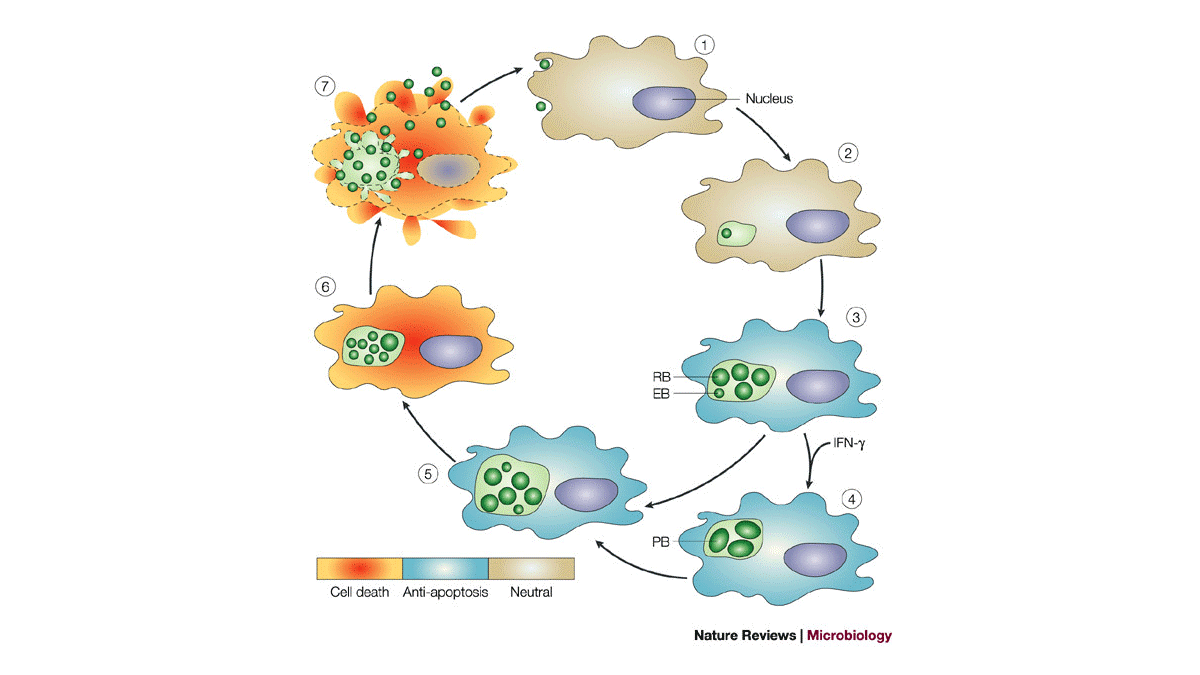Key points
- Chlamydia pneumoniae can infect the upper and lower respiratory tract.
- Most respiratory infections caused by C. pneumoniae are asymptomatic or mild.
- Illness is usually self-limiting, but treatment with antibiotics is sometimes recommended.
- Clinical reference laboratories can provide diagnostic testing.
- Collect specimens before antimicrobial therapy starts, if possible.

Cause
C. pneumoniae are a type of bacteria that can cause respiratory tract infections. These bacteria were previously called Chlamydophila pneumoniae.
Unique developmental cycle affects culture methods
C. pneumoniae have a unique developmental cycle with growth taking place within host cells (see image below). Culturing the bacteria requires growth within eukaryotic cells rather than on cell-free culture media.

Reprinted by permission from Macmillan Publishers Ltd: https://www.nature.com/articles/nrmicro1007.
Who is at risk
Primary infection occurs mainly in school-aged children or young adults.
Reinfection is most common in older adults.
Incubation period
C. pneumoniae infection generally has a long incubation period of 3 to 4 weeks. However, studies have documented shorter times.
How it spreads
C. pneumoniae usually spread from close person-to-person contact by respiratory droplets.
C. pneumoniae can also spread through fomites. This happens when people touch surfaces contaminated with those respiratory droplets and then touch their nose or mouth.
Infection rates
There is no national reporting or surveillance system for C. pneumoniae infections. It's likely that many C. pneumoniae infections aren't identified due to it typically causing mild or no symptoms.
Risk of death
Risk of death is low, but not zero. Severe complications can occur with C. pneumoniae infections. These complications can result in hospitalization and sometimes death.
Clinical features
Most respiratory infections caused by C. pneumoniae are asymptomatic or mild.
Testing and diagnosis
Clinical reference laboratories can provide diagnostic testing for C. pneumoniae infections using
- Molecular methods
- Serology
- Culture
There are multiple commercially available systems for the direct detection of C. pneumoniae in respiratory specimens. This includes several Food and Drug Administration-cleared tests.
Treatment and recovery
Illness caused by C. pneumoniae is usually self-limiting and people may not seek care.
Antibiotic options
Healthcare providers can treat the disease on a case-by-case basis with:
- Macrolides (azithromycin) — first-line therapy
- Tetracyclines (tetracycline and doxycycline)
- Fluoroquinolones
Healthcare providers shouldn't prescribe tetracyclines for young children under normal circumstances.
Antibiotics not recommended for use
C. pneumoniae show in vitro resistance to the following antibiotics, which aren't recommended for treatment:
- Penicillin
- Ampicillin
- Sulfa drugs
Additional treatment for persistent infections
Symptoms of C. pneumoniae infection can reappear after a short or conventional course of antibiotics. Persistent infection after treatment has been demonstrated by recovery of viable bacteria; therefore, a secondary course of treatment may be recommended.
Resources
Community-acquired pneumonia (CAP) treatment guidelines
Diagnosis and Treatment of Adults with CAP
American Thoracic Society and Infectious Diseases Society of America
Management of CAP in Infants and Children Older Than 3 Months of Age
Pediatric Infectious Diseases Society and the Infectious Diseases Society of America
